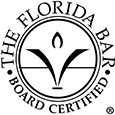What are public-private partnerships?
Public-private partnerships (P3s) are collaborative agreements between government entities and private-sector businesses. These partnerships aim to leverage the expertise and resources of both sectors to achieve public goals more efficiently and effectively. In Florida, public-private sector partnerships often intersect with real estate law, business law, and government relations.
A notable example of a public-private sector partnership in Florida is the Miami Intermodal Center (MIC). This transportation hub, developed through a collaboration between the Florida Department of Transportation (FDOT) and private companies, combines various modes of transportation, including buses, rental cars, and Metrorail. The MIC exemplifies how public-private partnerships can enhance public infrastructure and stimulate economic development in the state.
Need help facilitating opportunities in the public sector? Schedule your consultation today with a top public-private partnership attorney.
Which Florida laws, rules, and regulations apply to P3s?
Florida Statutes Section 255.065 and Section 334.30 establish the framework for public-private partnerships for public and transportation facilities, respectively. These statutes outline the procedures for soliciting, receiving, and evaluating proposals for P3s and the criteria for selecting private entities.
Additionally, agencies like the Florida Department of Transportation (FDOT) guide public-private partnerships, including this reference guide. Moreover, local governments like Miami-Dade County often provide more specific guidelines for P3s.
Understanding and adhering to these state and local laws, rules, and regulations is crucial for successfully implementing public-private partnerships in Florida.
How do risk analysis and insolvency protection connect to P3s?
Public-private partnerships (PPPs) involve a combination of public and private resources to deliver public services or infrastructure projects, and as such, they come with a unique set of risks. Here are some common risks and strategies to manage them:
- Construction Risk: This risk pertains to the project’s design, construction, and commissioning phase. Delays, cost overruns, and technical failures are common. To mitigate this risk, parties can use fixed-price, lump-sum contracts that pass the risk to the contractor. Using performance bonds and parent company guarantees can also provide some protection.
- Operational Risk: Once the project finishes, there may be risks related to its operation and maintenance. Partners can mitigate these issues through detailed operational and maintenance contracts and risk-sharing mechanisms.
- Financial Risk: PPPs often involve significant financial risk, including the possibility of insolvency. Strategies to mitigate financial risk include securing sufficient equity commitment from the private partner, maintaining adequate reserves, using conservative debt structures, and insuring against critical risks.
- Demand Risk: This issue pertains to the risk that the actual demand for the service or infrastructure will be lower than projected. Demand risks may diminish through minimum revenue guarantees or contracts allowing adjustments based on actual demand.
- Regulatory Risk: Changes in law or regulatory policy can significantly impact PPP projects. Regulatory risk-sharing mechanisms and contractual provisions that address changes in law or policy may help address related issues.
- Political Risk: Changes in government, public opposition to the project, or other political factors can create risks. Robust stakeholder engagement processes, political risk insurance, and contractual provisions addressing political force majeure events all help counter or minimize the impact of adverse political actions.
- Environmental and Social Risk: These risks arise from the project’s potential social and environmental impacts. Partnerships can effectively manage these risks through rigorous ecological and social impact assessments, ongoing monitoring, and compliance with the relevant industry standards and best practices.
- Force Majeure Risk: This risk refers to unexpected events outside the parties’ control, such as natural disasters or other significant incidents. Insurance and force majeure provisions are critical to managing the potential impact of these events.
Insolvency protection is critical for PPPs due to these projects’ long-term nature and scale. Strategies include:
- Reserve Accounts: These accounts cover unexpected costs or revenue shortfalls. They can be funded by the project company, lenders, or both.
- Debt Service Coverage Ratios (DSCR): These ratios measure the project’s ability to cover debt obligations. Lenders often require minimum DSCRs to provide a buffer against potential financial difficulties.
- Escrow Accounts: These accounts can hold funds accessible in the event of insolvency.
- Credit Enhancements: These can include guarantees, insurance, or other forms of support that improve the project’s creditworthiness and reduce the risk of insolvency.
- Contractual Provisions: The contract can include provisions for potential insolvency, including step-in rights for lenders, termination provisions, and mechanisms to handle the project company’s liabilities.
It’s important to note that while these strategies can mitigate risks, they can’t eliminate them. A successful PPP requires a comprehensive risk management strategy that identifies potential hazards, assesses their likelihood and potential impact, and implements appropriate mitigation strategies.
When a set of facts is appropriate for facilitating a partnership with the public sector, there are many paths a client may take. We are value-based attorneys at Jimerson Birr, which means we look at each action with our clients from the point of view of costs and benefits while reducing liability. Then, based on our client’s objectives, we chart a path to seek appropriate remedies.
To determine whether your unique situation may necessitate litigation or another form of specialized public sector advocacy, please contact our office to set up your initial consultation.
How can counsel facilitate risk analysis and insolvency protection on behalf of businesses, and what are the associated strategic benefits?
To effectively facilitate risk analysis and insolvency protection for businesses partnering with the public sector, counsel should consider the following steps:
- Conduct thorough due diligence: Review the business’s financial health, internal governance structures, and past performance in similar partnerships.
- Develop a comprehensive risk management plan: Identify potential risks, assess their likelihood and potential impact, and establish mitigation strategies.
- Negotiate favorable contract terms: Ensure contracts contain provisions that allocate risks equitably between parties and establish clear mechanisms for dispute resolution.
- Monitor ongoing performance: Track the partnership’s progress and assess whether the risk management plan needs to be updated or adjusted.
Strategic benefits for businesses include:
- Reduced financial exposure: Businesses can minimize their economic vulnerability by identifying and addressing potential risks.
- Increased predictability: Effective risk management reduces the likelihood of unforeseen problems, leading to a more stable and predictable partnership.
- Improved reputation: Successfully navigating P3s can bolster a business’s reputation, leading to more opportunities for future collaborations.
Please contact our office to set up your initial consultation to see what forms of legal protection and advocacy may be available for your unique situation.
Frequently Asked Questions
- What are standard P3 projects in Florida?
P3s in Florida often form to facilitate projects related to transportation, infrastructure, and public facilities, such as highways and bridges.
- How can businesses in public-private partnerships access insolvency protection?
Businesses should obtain insurance, structure their finances to minimize risk exposure, and negotiate contract terms that protect their interests in the event of financial distress.
- How does the government manage risks and insolvency protection in public-private partnerships?
Government entities are responsible for evaluating the financial health of potential private-sector partners, establishing regulations to guide P3s, and monitoring the ongoing performance of the partnership to ensure appropriate and effective risk management.
Have more questions about how your business can access new opportunities in the public sector?
Crucially, this overview of risk analysis and insolvency protection for P3s does not begin to cover all the laws implicated by this issue or the factors that may compel the application of such laws. Every case is unique, and the laws can produce different outcomes depending on the individual circumstances.
Jimerson Birr attorneys guide our clients to help make informed decisions while ensuring their rights are respected and protected. Our lawyers are highly trained and experienced in the nuances of the law, so they can accurately interpret statutes and case law and holistically prepare individuals or companies for their legal endeavors. Through this intense personal investment and advocacy, our lawyers will help resolve the issue’s complicated legal problems efficiently and effectively.
Having a Jimerson Birr attorney on your side means securing a team of seasoned, multi-dimensional, cross-functional legal professionals. Whether it is a transaction, an operational issue, a regulatory challenge, or a contested legal predicament that may require court intervention, we remain tireless advocates at every step. Being a value-added law firm means putting the client at the forefront of everything we do. We use our experience to help our clients navigate even the most complex problems and come out the other side triumphant.
If you want to understand your case, the merits of your claim or defense, potential monetary awards, or the amount of exposure you face, you should speak with a qualified Jimerson Birr lawyer. Our experienced team of attorneys is here to help. Call Jimerson Birr at (904) 389-0050 or use the contact form to schedule a consultation.

We live by our 7 Superior Service Commitments
- Conferring Client-Defined Value
- Efficient and Cost-Effective
- Accessibility
- Delivering an Experience While Delivering Results
- Meaningful and Enduring Partnership
- Exceptional Communication Based Upon Listening
- Accountability to Goals









